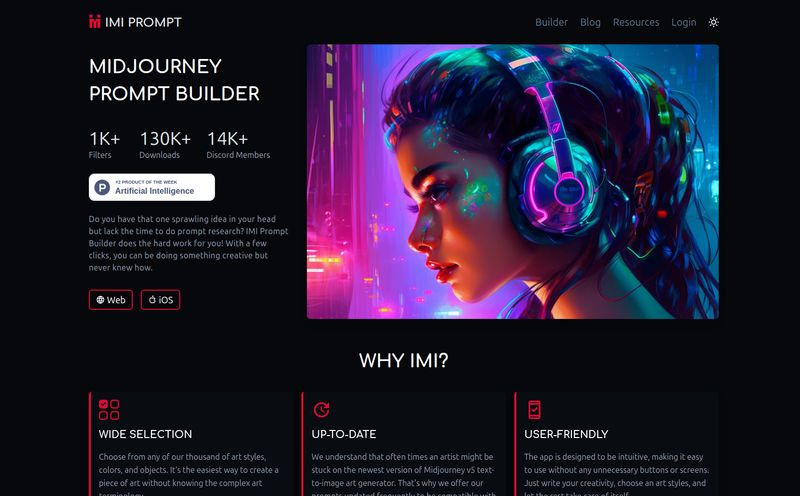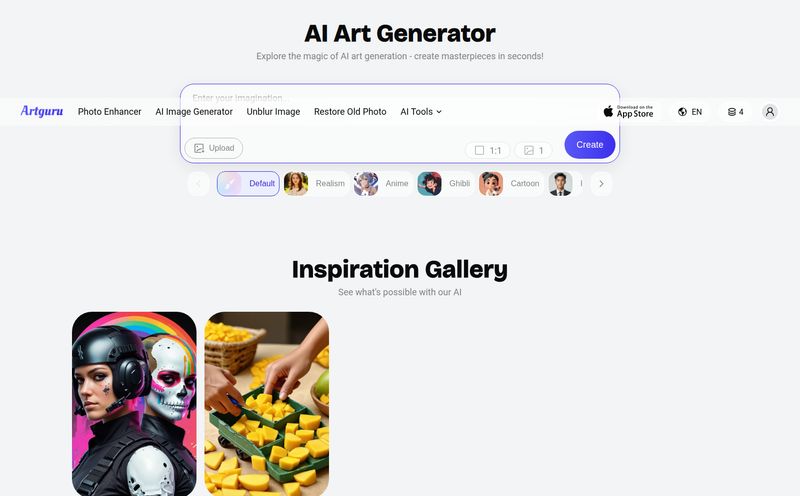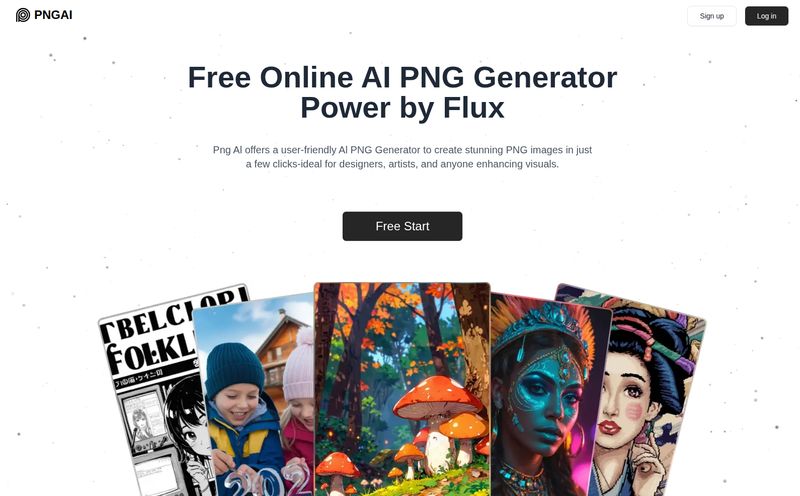The other day, I was digging through some old bookmarks, a digital graveyard of half-finished projects and once-brilliant ideas. I stumbled on a link for something called “Masterpiece Studio.” The name rang a bell. I remembered the buzz a few years back—a full VR creative suite, powered by generative AI, built from the ground up for indie creators. It promised to make 3D modeling, that notoriously tough nut to crack, almost... easy.
Intrigued, I clicked the link. And got this:
The page you are looking for has been moved or deleted.
My heart sank a little. You know the feeling. Another cool, promising startup gone to the big server farm in the sky. It’s a common story in tech, really. A brilliant idea gets some traction, but the runway runs out. I figured Masterpiece Studio was just another ghost in the machine, a cautionary tale.
But I was wrong.
What Was the Original Dream of Masterpiece Studio?
Before we get to the plot twist, let’s talk about what Masterpiece Studio was supposed to be. Because the idea itself is still incredibly relevant. The pitch was simple and, for anyone who’s spent a weekend fighting with Blender’s UI just to make a lopsided donut, it was a dream. It was a complete suite of tools that let you generate, edit, and deploy 3D assets, all within a hands-on, immersive VR environment.
Think about that. No more abstracting a 3D object with a 2D mouse and screen. You could literally reach out and shape your creations like digital clay. On top of that, they were leaning into generative AI before it became the all-consuming topic of conversation it is today. The goal was to remove the immense technical barrier that keeps so many creative people out of 3D. It wasn't about replacing artists; it was about giving them a new kind of paintbrush.
It was aimed squarely at the little guy: the solo game dev, the VRChat world builder, the indie animator. The people with big ideas but not-so-big budgets or teams. It was, for all intents and purposes, meant to be the great equalizer in 3D creation.

Visit Masterpiece Studio
So, Did It Actually Disappear? A Rebranding Investigation
After hitting that 404 page, I did what any self-respecting SEO nerd would do: I started digging. I felt like a digital archaeologist, brushing the dust off old press releases and forum posts. And then I found it. A new name, a new website, a new life.
Masterpiece Studio didn't die. It evolved.
It turns out the company rebranded to Masterpiece X. The original vision is still there, but it's been sharpened, refined, and frankly, better adapted to the world we live in now. The broken link I found wasn't a tombstone; it was just an old, shed skin. A testament to how fast this industry moves. One minute you're a VR-first platform, the next you have to adapt or get left behind.
This is a much happier story than the one I thought I was going to write. It’s not a post-mortem; it’s a progress report.
Getting to Know Masterpiece X: The Next Chapter
So what is Masterpiece X? From what I can gather on their new site, they took the core DNA of the original Studio and turbocharged it. The focus is still heavily on making 3D creation effortless through AI, but it seems to have broadened its horizons beyond being a strictly VR-only affair. And that’s a smart move, in my opinion.
A More Accessible Workflow
Let's be honest, as cool as VR is, requiring a headset for every single step of a creative process can be a huge bottleneck. It’s great for sculpting and initial blocking, but for fine-tuning, texturing, and file management? Sometimes you just want a mouse and keyboard. Masterpiece X seems to understand this. Their platform is now a powerful web-based tool, making it instantly accessible to anyone with a browser. The VR component hasn't been abandoned, but rather integrated as part of a larger, more flexible ecosystem. This feels much more practical for the modern creator who jumps between different devices and workflows.
Leaning Harder into Generative AI
The AI landscape in 2024 is a world away from what it was when Masterpiece Studio first launched. They haven't just kept up; they've put it front and center. The platform is now described as the “first end-to-end AI-powered character creator.” You can generate a character from a text prompt, auto-rig it for animation, and customize it, all in a fraction of the time it would traditionally take. This is the kind of workflow that actually changes the game for indie teams.
Is It Still Built for the Indie Creator?
This is always the big question when a company rebrands and levels up. Do they leave their original audience behind in pursuit of bigger enterprise clients? I went looking for the pricing page, half-expecting to see a “Contact Us for a Demo” button—the corporate kiss of death for indies.
I was pleasantly surprised. Masterpiece X has a tiered pricing structure that still feels very much in touch with its roots. There’s a Free plan, which is huge for anyone just wanting to dip their toes in. For more serious users, the Pro plan sits at a pretty reasonable $19 per month, offering more credits and advanced features. And yes, they have a Teams plan for studios. This mixed model is perfect; it lets them serve a wider audience without pricing out the very creators who believed in their vision from the start.
The Bigger Picture for AI Creative Tools
The story of Masterpiece Studio becoming Masterpiece X is a perfect microcosm of the entire creative technology space. We're seeing an incredible acceleration. Tools Iike this, along with others like Luma AI's Genie for 3D generation or Spline for web-based 3D design, are fundamentally altering what it means to be a creator. The old, rigid pipelines are dissolving.
The future isn't about one tool to rule them all. It's about a fluid, interconnected set of services where you can generate an idea in one place, rig it in another, and deploy it in a third, all in the span of an afternoon. It's a bit chaotic, sure, but it's also incredibly liberating. And for a moment there, I thought we had lost one of the pioneers. I’m glad I was wrong.
Frequently Asked Questions
- What exactly was Masterpiece Studio?
- Masterpiece Studio was an early and ambitious VR-based 3D creative suite. It was designed for independent creators to make 3D models and assets in an immersive virtual reality environment, with a strong focus on using generative AI to simplify the process.
- Did Masterpiece Studio shut down?
- No, it didn't shut down! This is the good news. The company rebranded and evolved its product into what is now called Masterpiece X. If you find old links to Masterpiece Studio, they likely won't work, which has led to some confusion.
- So what is Masterpiece X?
- Masterpiece X is the current version of the platform. It has expanded on the original vision, creating a more robust, web-based platform that heavily integrates generative AI for creating, rigging, and customizing 3D characters and objects. While it still has roots in VR, it's now more accessible across different devices.
- How much does Masterpiece X cost?
- Masterpiece X uses a tiered subscription model. There is a free plan for beginners, a Pro plan for individual creators (around $19/month), and a custom Teams plan for larger studios, making it accessible for various budgets.
- Do I absolutely need a VR headset to use Masterpiece X?
- No. This is a key part of their evolution. While the original Masterpiece Studio was very VR-centric, Masterpiece X is primarily a web-based tool. This means you can use it on your computer with a standard browser, which significantly lowers the barrier to entry.
- What are some good alternatives to Masterpiece X?
- The AI 3D space is growing fast! For 3D asset generation, you might look at tools like Luma AI or Kaedim. For real-time 3D collaboration and design, Spline is fantastic. For more traditional (but still powerful) modeling, Blender remains the open-source king.
Conclusion: A Story of Evolution, Not Extinction
Finding that broken link sent me down a rabbit hole I wasn't expecting. I started out thinking I was writing an obituary for a promising piece of software, another casualty of the brutal tech cycle. Instead, I found a story about adaptation and growth. Masterpiece Studio didn't die; it just logged off to level up.
It's a powerful reminder that in the world of SEO and digital content, things are rarely static. A 404 page isn't always an end. Sometimes, it’s just a sign that you need to update your bookmarks. I, for one, am excited to see what gets built with Masterpiece X. The dream of making 3D creation accessible to all is alive and well.
Reference and Sources
- The official website for the evolved platform: Masterpiece X
- An example of a competing generative 3D tool: Luma AI
- An example of a web-based 3D design tool: Spline



